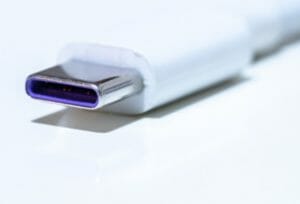Table of Contents
The USB-C is a connecting cable established by the USB Implementers Forum to transmit power and data to and from a computer device using one cable. The USB-C was developed in 2014, and it assumes an oval shape. In comparison to previous USB connectors, USB-C is smaller in size.
The USB-C features reversible technology that allows the cable to transmit data either way. There is no standard orientation for data transfer.
It can transmit power of up to 100W to the devices attached to it. This power is sufficient to charge almost all computing devices - portable monitors, which are lightweight and small, are typically powered by a single USB port, usually with a USB-C connection. USB-C can also transmit 4K video signals to external monitors used for graphic design and such. USB-C transmits both video and audio signals. The connector features a faster data transfer rate of up to 40Gbps
What is USB-C?
The USB-C is a connecting cable - see all connection types - that uses a single cable to transmit data and power to and from computer devices.
USB-C is used for transmitting data, that is, 4K video signals and audio signals to external monitors. The USB-C is also used to transmit power to the devices attached to it.
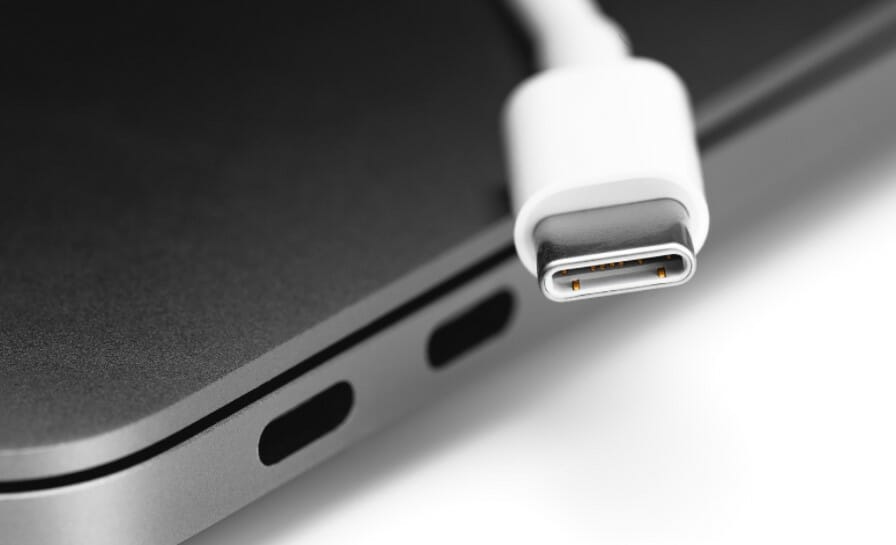
USB-C's features are:
- Its size is smaller than other USB connectors for mini-computer connections.
- Has identical connectors on either side. This allows you to connect it either way, with no specific orientation.
- Transfers both video and audio signals to external monitors. It can transmit 4K video signals.
- Features a data transfer rate of up to 40Gbps, fast enough to send data more efficiently.
- A connector can transmit data and power to devices attached to it using a single cable.
What Does USB-C Mean?
USB-C means Universal Serial Bus Type C, a connecting cable used to transfer power and data to and from computer devices using a single cable. The USB-C can transfer the power of up to 100W and 40 Gbps data speed.
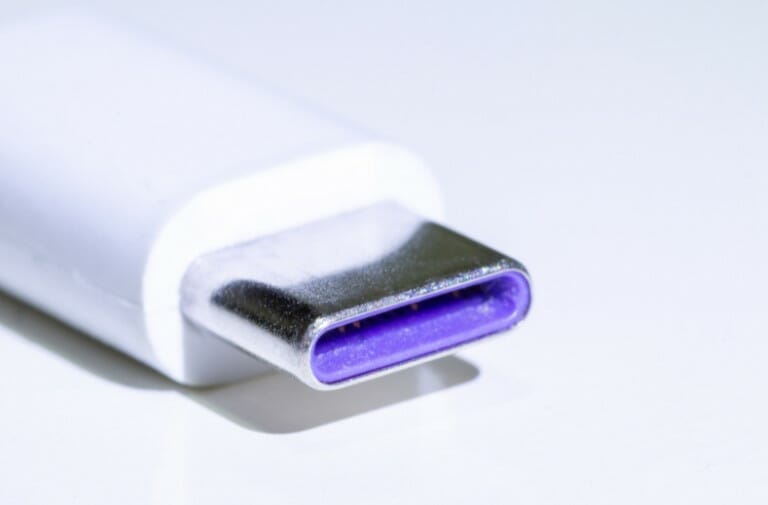
Is USB-C Like Micro USB?
USB Type C is like a Micro USB. The USB-C has the same outlook characteristics as the Micro USB. However, the two, USB-C and Micro USB, have some differences.
- Assumes a more oval shape. The USB-C is also thicker than the Micro USB.
- It can also connect in either way; no specific orientation is needed. On the other hand, Micro USB can only connect through one orientation.
- Other than charging and transferring data, USB-C also features MIDI input, MTP file transfer, and PTP image transfer, a feature lacking in Micro USB.
- The design allows you to input the cable regardless of the orientation, while Micro USB only supports one orientation.
- It also has a higher data transfer rate than Micro USB. USB-C supports up to 40 Gbps data transfer rate, while Micro USB can only support 5Gbps.
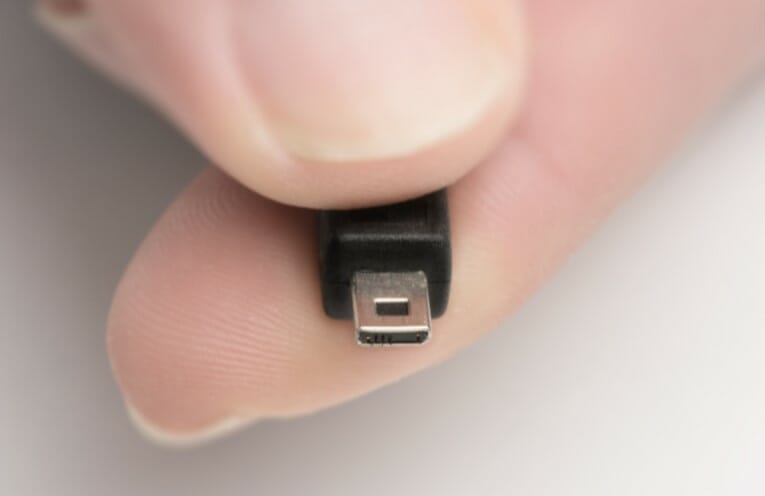
What are the Functions of USB-C?
The functions of USB-C are listed below:
- USB-C connector is used for computer devices charging
- It is used for data transfer. It transfers both audio and video data signals. The USB-C can support 4K video signals.
- It's also used as a display standard for audio and video.
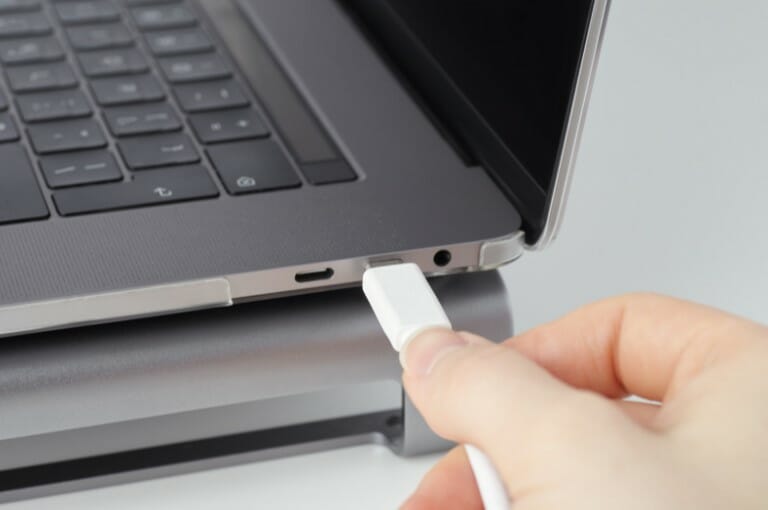
The USB-C connector is compatible with nearly all computing devices. The identical connector design on both ends allows it to be connected in any given orientation. The connector is also small-sized, allowing it to connect to Microcomputers and mini display adapters.
What Does the USB-C Input Look Like?
USB input looks like a 24-pin female port identical to the USB-C connector. The USB-C input is an oval-shaped female port found in USB-C-compatible devices. During connection, the male USB-C cable is connected to it.
What Does the USB-C Cable Look Like?
A USB-C cable appears like a 24-pin oval-shaped connector at both ends of the cable. The connectors at its end are identical, allowing for any orientation connection. The connectors are also small, allowing them to be connected to the Microcomputers and mini display adapters. Its design allows for universality as it can connect to any USB-C compatible device.
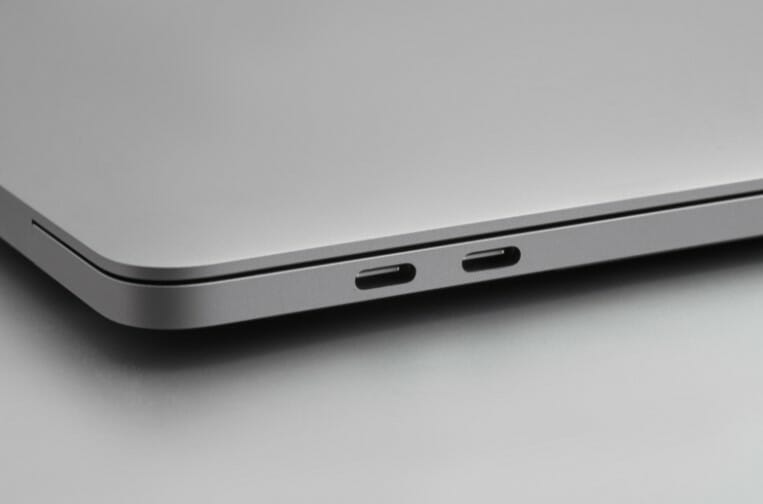
What is the History of USB-C?
USB-C was developed in August 2014 by USB Implementers Forum. It was presumed to be the "cable of the future." The cable has replaced previous versions of the USB connector. The USB-C is the first USB connector to use reversible technology.
The USB Implementers Forum is behind the development of all Universal Serial Bus versions, USB-C included.
USB Implementers Forum was established in 1995. The Forum is a non-profit organization. One year after its establishment, the USB-IF developed its first USB connector, the USB Type-A connector. Later on, they developed micro-USB, and in 2000, they established USB 2.0. In 2014, the USB-IF developed USB Type C, alias USB-C.
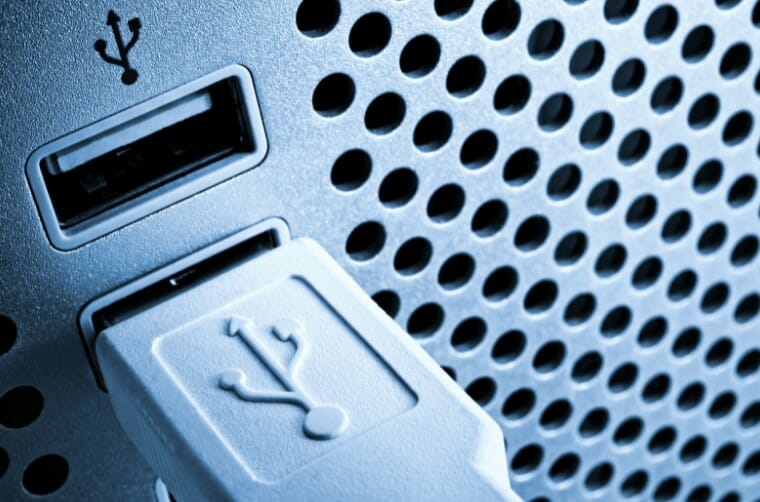
Who is the Inventor of USB-C?
The inventor of USB-C is the USB-IF, which was started in 1995 with the aim of enhancing USB technology.
The USB-IF organization aims at developing and advancing USB technology. The USB-C also ensures the development of USB-compatible devices. The Forum goes further to ensure quality certification of USB-related products.
Below is a list of activities the Forum is involved in.
- Hosts workshops and provides information on USB compliance
- Comes up with USB compliance test procedures and requirements
- Promotes USB technology and its diversity
- Hosts USB Developer Conferences
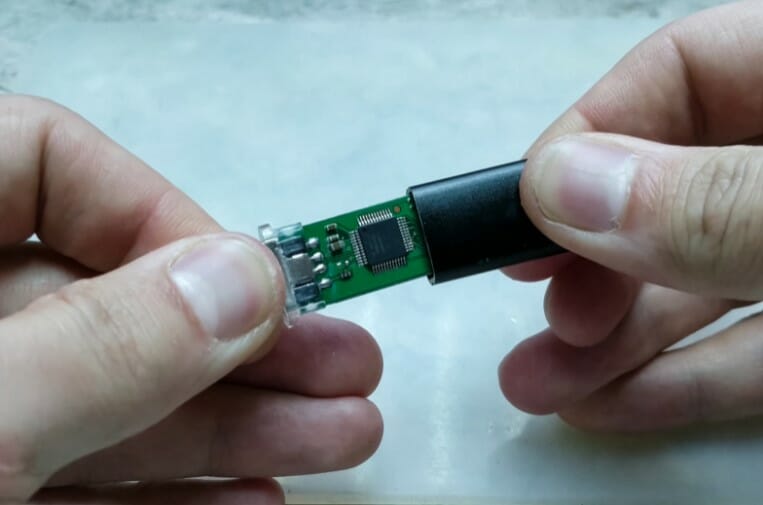
What are the Cable Types of USB-C?
The cable types of USB-C are listed below.
USB 2.0
USB 2.0 was developed in early 2000. This cable is not very common, but features in some adapters and devices. This USB-C cable version has a charge output of up to 2.5W. Its data transfer rate is 480Mbps. It also transfers power at a rate of five volts and 0.5 amps.
USB 3.2 Gen 1
This USB-C generation was previously called USB 3.0. It later adopted the name USB 3.1 Generation 1 before shifting to USB 3.2 Generation 1. This came after Forum introduced the 3.2 protocol in 2019. This USB generation comes with improved data speed. It transfers data up to 5Gbps. Its charging output is 4.5 W. it charges at a speed of five volts at 0.9 amps.
USB 3.2 Generation 2
This USB-C generation was called USB 3.1 before its developers changed the name. It was changed again and named USB 3.1 Gen 2 before it finally adopted its current name. This USB generation has a boosted bandwidth range. It has a range of 10 Gbps. This USB-C generation also has a power output of up to 7.5W. Its charging rate is five volts with 1.5 amps, which is ideal for professionals to recharge a laptop by connecting their programming monitors, for example, to a USB-C.
USB 3.2 Gen 2x2
Before it was named USB 3.2 Gen 2x2, this USB generation was called USB 3.2. This USB version features a dual-lane transmission cable that can transmit data at a speed of up to 20 Gbps. Its power output is 15 volts with a charging rate of up to five volts at three amps.
USB4
USB 4 has a higher data transfer rate than its predecessors. It features a data transfer rate of up to 40Gbps. USB4 also incorporates Thunderbolt technology (see the review), making its display feature have more clarity. USB4 also features a default power transfer, a feature that boosts the charging speed of the USB-C cable.
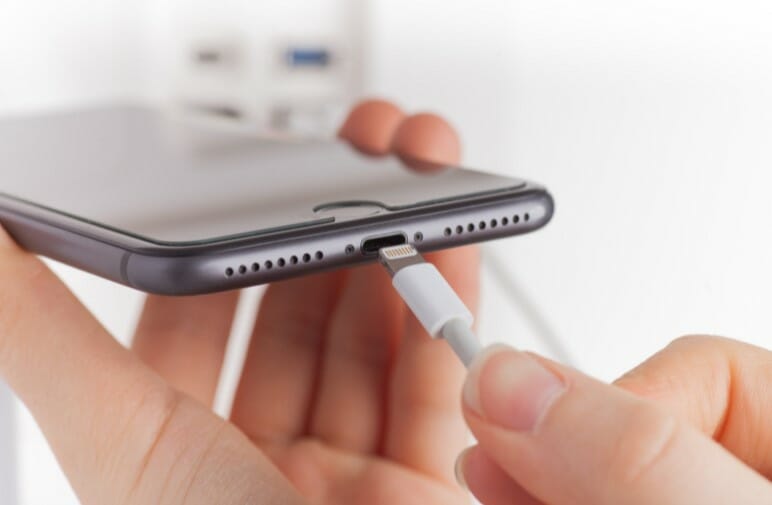
What are the Cable Bandwidths of USB-C?
The maximum bandwidth of USB-C cables is 40Gbps. USB4 has the highest bandwidth, with 40Gbps, while USB 2.0 has the least bandwidth, with a range of 480Mbps. Other USB-C cable types' bandwidths are as shown below.
USB4 - 40 Gbps
USB 3.2 Gen 2x2 - 20Gbps
USB 3.2 Generation two - 10Gbps
USB 3.2 Generation one - 5Gbps
What is the Average Cost of USB-C?
The average cost of a USB-C is $8.62 for a six-foot USB-C cable. A three-foot USB-C cable will cost an average of $7.64. Another option is a six-inch USB-C cable, which costs an average of $28.99. The same USB-C cable of length nine feet will cost an average price of up to $35.39.
You can also get a cable for as low as $5.15. A six-foot USB-C 2.0 costs an average of $ 5.15.

What is the Market Share of USB-C?
The USB-C industry is divided into several segments. They include the Type C male and female connectors, Thunderbolt, and Others. The USB-C is further categorized into four categories based on their application. These are automobiles, laptops and tablets, mobile phones, and other consumer electronics.
Of all the USB-C categories, mobile phones have the most significant shares in the USB-C market share, with a tally of up to about 65.44%. The USB-C male and female connectors have equal shares in the USB-C market shares.
The 2020 report of the USB-C market shares is valued at USD 8300.8. The USB-C market forecast is USD 20860 million for the next five years. The market share of USB-C has a 16.6% Compound Annual Growth Rate estimate for the next five years.

What are the Features of USB-C?
USB-C has the following list of features.
- USB-C has 24 pins in its connector
- Transmits power, data, and display signals through a single cable
- Has a maximum bandwidth of 40Gbps, making it a fast data transfer cable
- Uses a reversible technology, allowing it to send and receive data and power from computing devices
- The cable has an oval-shaped male connector that fits in the female USB port without a specific orientation
- Its small design allows it to connect to microcomputers and mini display adapters.
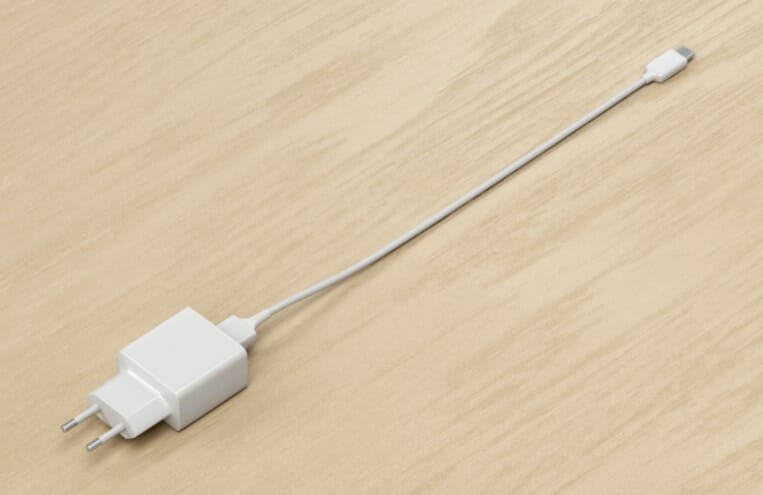
What are the Benefits of Using USB-C?
The key benefits of using USB-C include:
What are the Cons of Using USB-C?
The cons of using USB-C areas are listed below.
What are the General Problems and Solutions about USB-C Connection?
The general problems and solutions about USB-C connection are listed below.
- Slow USB-C charging or lagging charger
- Faulty USB-C charger or not working
- Limited display USB-C feature connection
- Computer or phone not charging
- USB-C port on the USB-C compatible device might not work
- Limited USB-C functionality
- The USB-C audio adapter might be unsupported.
- No communication between the two connected devices
- Faulty USB-C device connected.

Below are the fixes for the common USB-C problems.
Slow USB-C charging or lagging charger
- Check if the charging cable you're using is the one that was among the package included with your laptop or phone. You're supposed to use no other to boost charging.
- Ensure that the USB-C cable is connected to the USB-C port on your device.
- Check if there are dust particles or dirt in your USB-C port. If any, clean using a can with compressed air
These are the associated causes of the USB-C slow charging problem.
- The charger you're using is incompatible with your device.
- The charger you're using has insufficient power to charge your device.
- Your charger is not connected to the correct charging port on the device.
- Your USB-C cable's power is inferior for the phone, laptop, or USB-C charger.
- Your port on the device might have dust particles or other dirt that prevent the USB-C cable from being connected correctly.
Faulty USB-C device or not working
Follow the guideline given below to fix a faulty USB-C device.
- Ensure your device has the latest Windows updates.
- Inspect for updates using this procedure.
- Go to start. Hover over the app list and click on settings.
- Go to the Update & security tab and click on it.
- Select the Phone update option.
- Click on the check for updates tab.
This procedure will scan your Windows 10 device for any available updates and drivers.
Limited display USB-C feature connection
Follow the guidelines given below to fix the limited display USB-C feature connection.
- Inspect and ascertain that your USB-C device, monitor, and the connected USB-C cable are all compatible with MHL alternate or DisplayPort modes.
- Ensure the external display device is connected directly to the USB-C device (phone or laptop)
- Ensure your USB-C cable and device connection is from the USB-C port with Alternate Mode compatibility.
Computer or phone not charging
Below is a guide on how you can address the phone-not-charging issue.
- Check if the charging cable you're using is the one that was among the package included with your laptop or phone. You're supposed to use no other to boost charging.
- Ensure that the USB-C cable is connected to the USB-C port on your device.
- Check if there are dust particles or dirt in your USB-C port. If any, clean using a can with compressed air.
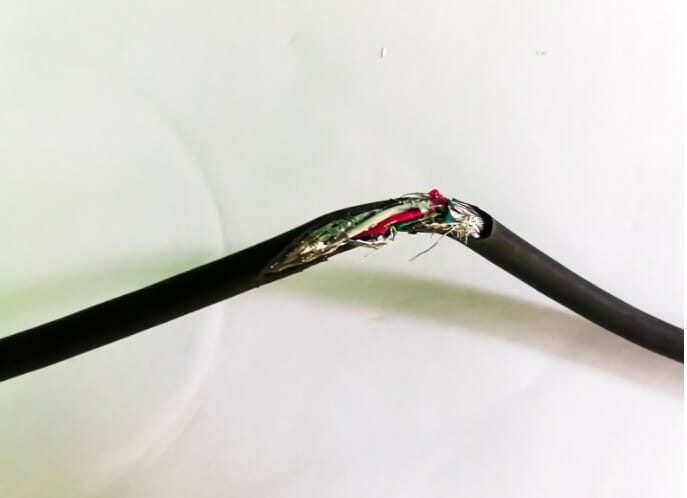
USB-C port on the USB-C compatible device might not work
If the USB-C port on your device is not working, try the following.
- Connect your USB-C device to your laptop or phone directly
- Connect the USB-C device to the USB-C port on your laptop or phone compatible with the device.
Limited USB-C functionality
Fix the limited USB-C functionality by following the guideline given below.
- Check if your device is compatible with the features of the devices connected to it.
- Ensure the cable and the device connected are all of the same features.
- Connect the device directly to your laptop or phone
- Ensure the USB-C port you connect your device to is supportive to a correct Alternate Mode.
The USB-C audio adapter might be unsupported.
An unsupported USB-C audio adapter means that your computing device does not support the connected audio adapter.
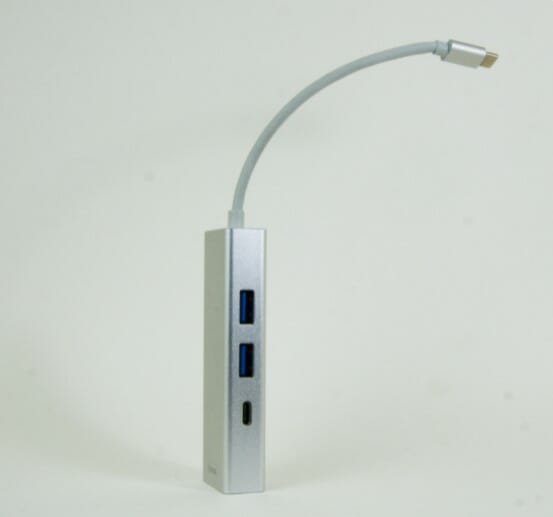
To fix this issue, try:
Disconnect the connected audio adapter if it's analog, then replace it with a digital audio adapter.
No communication between the two connected devices
This error notification might be caused by:
- A USB-C connection between two Windows 10 laptops
- A USB-C connection between two Windows 10 phones
To fix this error, try doing the following.
Disconnect your Windows 10 Phone connection or Windows 10 laptop to laptop connection and connect the Windows 10 laptop to a Windows 10 phone.
Can USB-C Connection be Used for Monitors?
Yes, a USB-C connection can be used for monitors, whether those are working or gaming monitors. USB-C cables have four lanes that transmit 4K display signals at high speeds. However, not all computing devices support this feature. Some devices are incompatible with USB-C display signals. In such scenarios, you are recommended to use a USB-C adapter to connect between the PC and the monitor. The great thing about monitors for work is that they have a USB-C connectivity, which lets the monitor use a single cable for both power and video signal.
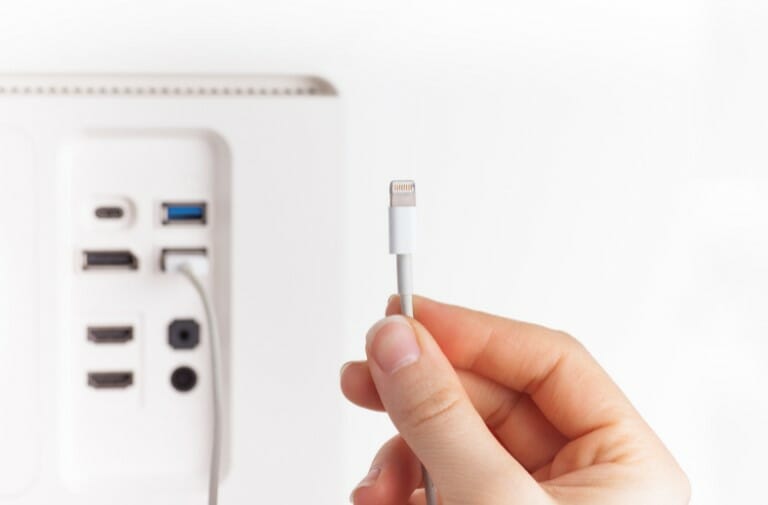
What is a USB-C Hub?
USB-C hubs are interfaces that allow you to link your laptop or phone with an external display. The USB-C hub will also allow you to connect a wired keyboard and a mouse to your USB-C device.
The USB-C hub also facilitates the connections of your external hard disk, flash drive, smartphone, and other peripheral accessories to the PC. Tablet, camera, or input devices like mouse, keyboard, and writing tablet connect to a USB-C Hub Adapter. An example of a USB-C hub is the HDMI video signal output that connects a PC and an external monitor (see HDMIs explained here).
A USB-C hub provides extra connecting ports to a USB-C PC with a limited number of ports. The USB-C hub features USB ports, VGA, HDMI, SD card slot, wired Ethernet, and audio output.
There are powered hubs that transmit power allowing an individual to charge computing devices.
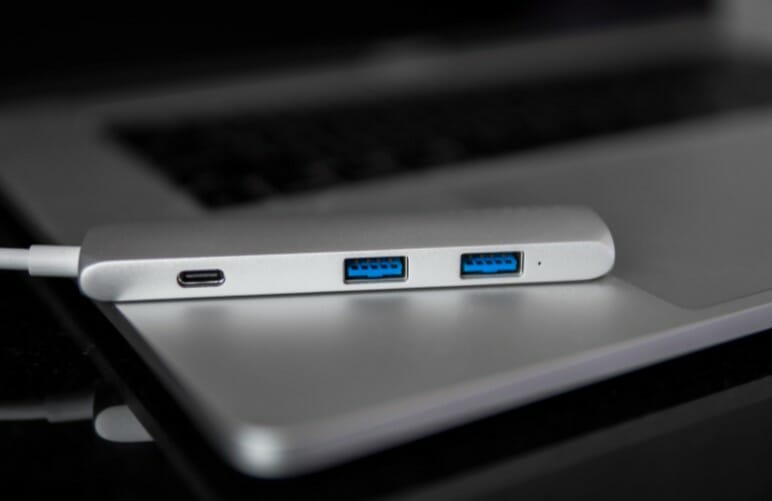
What is a USB-C Adapter?
USB-C adapter is the interface that enables the connection of all peripherals (USB-C compatible and incompatible) to your PC through one USB-C port. The USB-C allows you to connect hard drives, modems, monitors, SD cards, printers, and other accessories to the PC. Also, with its high data transfer rate and support for multiple devices, USB-C is key to realize your Mac Mini monitor's full potential.
The purpose of developing the USB-C adapter was to enable the connection of devices or peripherals that aren't compatible with USB-C. Note that USB-C only supports USB 3.0 generation ports. Thus, any other accessories with a different connector shape other than the oval USB-C shape will need to connect to the adapter first before linking to the PC.
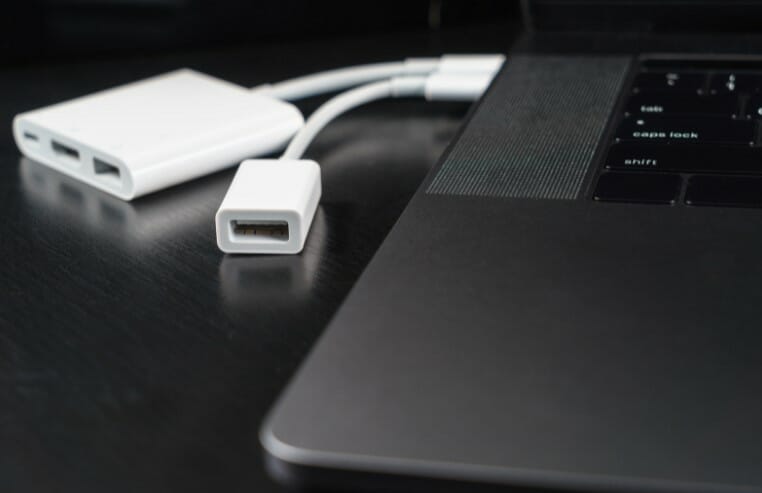
How to Convert USB-C To VGA
To convert USB-C to VGA, you can use a USB-C-to-VGA adapter. The adapter will convert USB-C digital signals to VGA analog signals before transmitting to a VGA compatible device.
To do the USB-C to VGA conversion, follow the steps given below.
- Plug in your adapter to the USB-C port on your PC.
- Plug in a VGA cable to the VGA port on your USB-C to VGA adapter
- Connect the VGA cable to the external display device
- Go to your Windows 10 settings and allow the USB-C to VGA adapter to link the monitor to the PC, or
You can also:
- Go to settings
- Select the System tab
- Choose the Display option
- Click on the Advanced display settings option.
How to Convert USB-C to USB
You can do this conversion using a USB-C to USB Adapter. The adapter allows you to connect non-USB-C accessories (USB peripherals) to a USB-C device. The adapter will also allow you to connect the USB accessories to a Thunderbolt 3-compatible device.
To do this conversion using a USB-C to USB adapter, follow the guide given below.
- Connect the adapter to your Thunderbolt device through the USB-C port on the adapter and the USB-C port on your PC
- Plugin your USB device, flash drive, or any other USB-compatible peripheral you wish to connect.
- The USB-C to USB adapter will also allow you to charge your iOS device when you connect the lightning to the USB cable attached to the adapter.
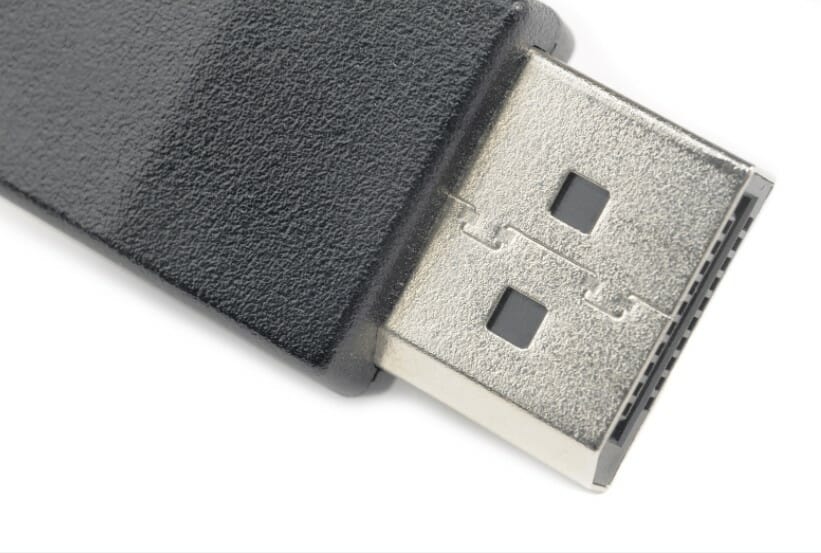
How to Convert USB-C to HDMI
To convert USB-C to HDMI, use a USB-C to HDMI Adapter. This adapter converts USB-C signals from a USB-C device to HDMI signals transmitted to an HDMI-compatible display.
To convert the USB-C to HDMI using an adapter, follow the guide given below.
- Link your USB-C to HDMI Adapter with your PC using the USB-C ports on both devices
- Plug in an HDMI cable to the adapter and connect to the external monitor.
- You can also connect other HDMI accessories to the adapter.
USB-C to HDMI conversion can also be achieved by the use of HDMI Alt Mode for USB-C products. This feature, released by HDMI Licensing, allows a single cable to convert the USB-C signals to HDMI signals without converters or adapters. These cables link a USB-C-compatible PC to a non-USB compatible display and transmit data directly between the two devices.
The Alternative Mode (Alt Mode) allows the connection of USB-C devices to non-USB-C displays. Besides transmitting HDMI signals over the USB-C cables, this model also allows the transmission of DisplayPort signals and Thunderbolt signals to their respective displays.
How to Convert USB-C to DisplayPort?
Your old USB Type-A connector might be thought of as little more than a data port for attaching drives or other devices, like mice. But USB-C can accomplish much more, depending on how the particular port is implemented. When configured in this way, one of USB-most C's beneficial abilities is the ability to supply enough power to recharge the host device, such as a laptop or a smartphone.
In fact, many thin and light laptops with USB-C ports use them as the only way to connect an AC charger, replacing the conventional barrel-style connector.
If you have the right adapter and cables, you might be able to connect to and power a native DisplayPort, MHL, or HDMI device as well as connect to nearly anything else thanks to USB-compatibility C's for simultaneous power and video streams. (For further info about adapters, see below.)
Although the 3.5mm headphone jack has not been completely displaced by USB-C on computers as it has on smartphones and tablets, the USB-C specification does take audio transmissions across the interface into account.
Check the specifications of any PC you're considering purchasing because not all USB-C ports are created equal. Every single one we've seen so far supports connected-device power delivery as well as data transfers over USB-C. (though not necessarily charging of the host device).
Although the DisplayPort-over-USB protocol allows for the connection of DisplayPort and/or HDMI displays using an adapter, not all PC manufacturers have integrated the ports with their systems' graphics hardware. Video-out connection may be supported by some USB-C ports on a system, but not by others or by any ports at all.
Additionally, some hardware adds additional security measures or other restrictions for connecting USB-C peripherals, including Macs, which starting with macOS 13 Ventura will require user approval before the attachment may interact.
What is the Difference Between USB-C and USB 3.1?
The differences between USB 3.1 and USB-C are listed below.
- USB-C is a connecting interface type (physical connecting cable), while USB 3.1 is a USB transfer standard.
- Has a maximum data transfer rate of up to 40Gbps, while that of USB 3.1 is 10 Gbps.
- Provides power at a rate of up to 20 volts at five amps, while USB 3.1 provides power at a rate of up to 5 volts at 1.5 amps
- Has a power output of up to 100 W, while USB 3.2 has a power output of up to 7.5 W.
- Incorporates reversible technology, while USB 3.1 does not feature reversible technology.
- Has an oval-shaped connector, while USB 3.1 has a rectangular-shaped connector.
What is the Difference Between USB-C and VGA?
The differences between USB-C and VGA are listed below.
- USB-C transmits digital display signals while VGA transmits analog signals
- Transmits both audio and video signals to external displays while VGA transmits only video signals to external displays
- Has a higher bandwidth than VGA. USB-C features a maximum bandwidth of up to 40 Gbps, while VGA has a maximum bandwidth of up to 3.96 Gbps
- Has an oval-shaped connector, while a VGA's connector assumes a D-shape with screws on both sides
- Has twenty-four pins on its connector, while VGA has fifteen pins on its connector.
- Features a reversible technology, while VGA does not incorporate a reversible technology, therefore you must be careful when plugging the cable in.
What is VGA? VGA is a fifteen-pin display standard that uses analog signals to transmit a computer (source) to an external display device.
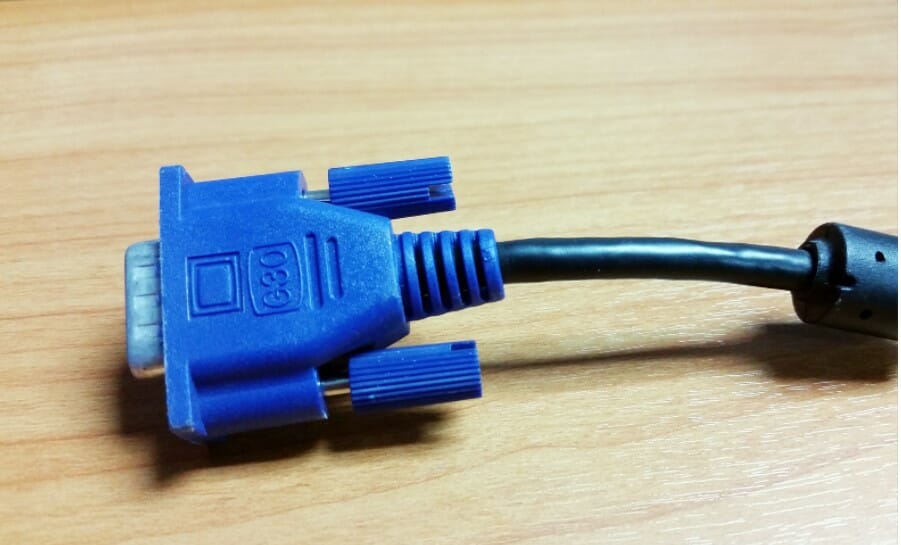
What is the Difference Between USB-C and HDMI?
The differences between USB-C and HDMI are listed below.
- Has a higher bandwidth than HDMI. USB-C has a bandwidth range of up to 40 Gbps, while the HDMI has a bandwidth of 4.95Gbps.
- Has a 24-pin connector, while an HDMI connector has 19 pins
- It has an oval-shaped connector, while an HDMI has a D-shaped connector
- Applies a reversible technology that allows it to be connected without a specific orientation, while an HDMI does not incorporate a reversible technology
- Supports 4K monitor resolution while HDMI version 1.4 and version 2.0 don't.
What is HDMI? HDMI is a display standard that uses digital signals to transmit audio and video signals from a computer to an external monitor or projector.
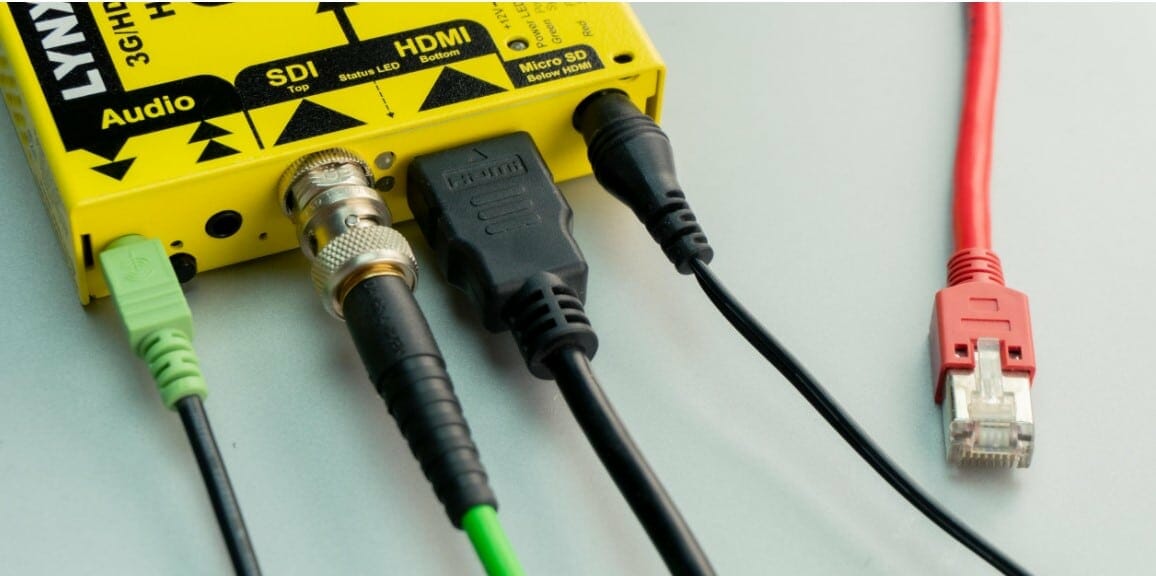
What is the Difference Between USB-C and DVI?
The differences between USB-C and DVI are listed below (see a more detailed DVI post here).
- USB-C is the acronym for Universal Serial Bus Type C, while DVI stands for Digital Visual Interface
- Has a maximum bandwidth of up to 40 Gbps, while DVI has a maximum bandwidth of 9.9 Gbps.
- Transmits both audio and video signals to external displays, while DVI transmits video signals only.
- Was developed by USB Implementers Forum, while the Digital Display Working Group developed DVI.
- Features a reversible technology, while DVI does not support this technology
- Transmits digital signals, while the DVI has some versions transmitting digital signals with some transmitting analog signals
- Has a 24-pin connector, while the DVI has a connector with eighteen pins.
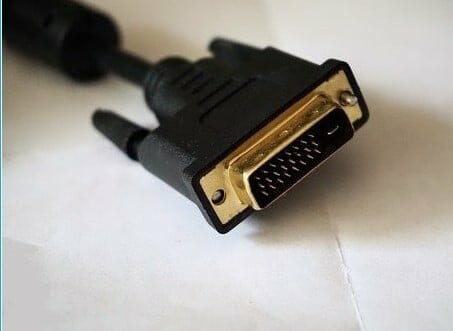
The answer to 'What is DVI?' is that it's a display interface connector that transmits digital video signals from a source computer to an external monitor or projector.

